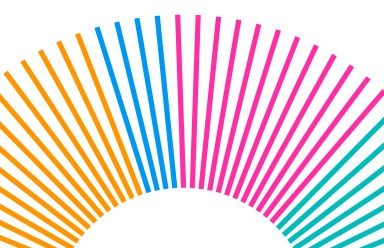One record after another was broken during the long hot summer, but a direct influence of the long hot summer on gross media spending is not immediately apparent. This is apparent from the new Nielsen Annual Report Gross Media Spending 2018. The traditional summer dip was no greater compared to other years.
The same cannot be said of the size of gross media spending. This increased significantly in 2018 by 7.5% and at the end of the year had a total budget of €7.9 billion. The growth in spending is not evenly distributed over the different medium types. Television, internet and out-of-home show above-average growth figures, the print media tempering this growth.
This development is not unique for 2018. This shift from paper to (digital) images has also been visible for some time in previous years. This of course has consequences for the spending shares, with television and the internet taking the lead and print media losing their share year-in-year-out.
The key figures for 2018 show that the composition of spending differs for each medium type. At least if you look at the top advertisers and their shares in the total media expenditure on that medium type. In television, the ten largest advertisers are responsible for 17% of the shares, while the ten largest flyers already collect 40% of the shares. At the cinema it is even 45%.
The number of advertisers with a budget of €1 million or more also differs per medium type. Public magazines, brochures and cinemas have the fewest of these advertisers, while television, radio and newspapers have the largest number of ‘big spenders’. The spending share of this select group of advertisers differs, however. In television this is 96%, but in the daily newspapers 9% of the advertisers – those who spend a million or more – are responsible for 72% of the spending.
Leaflets show the most extreme numbers. A small group of 37 advertisers accounts for 80% of the spending and 96% of all gross media spend within folders comes from the retail main group. This makes brochures a very clear part of the media market.
Under the influence of digitization, more and more distinctions are made between looking, reading and listening. Regardless of whether this is the classic form of media consumption or not. For example, listening can be listening to live radio via an FM device, but also listening to Spotify via a smartphone or listening to live radio via a tablet. It is a mix of devices, reception methods and forms of audio that ultimately add up to ‘listening’. The same goes for television and reading.
The distribution of gross media expenditure according to the three forms of media consumption shows that there is an increase in each of the content types. The fourth cluster is the same as out of home from the previous table, as it is not attributable to any of the other three clusters.
You can read about this and all developments per medium type, per sector, per season, advertisers, brands and much more in the Nielsen Annual Report Gross Media Spending 2018. Order a report? Contact us.



